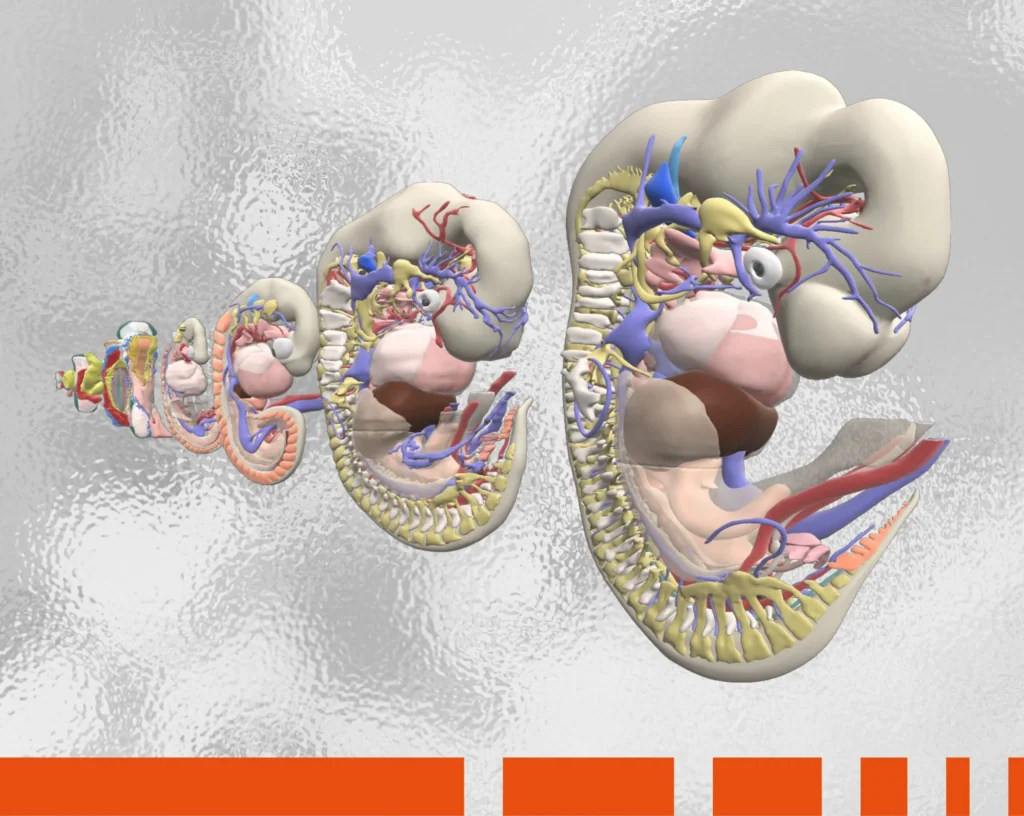The World Health Organization (WHO) reports that globally, 1.5 billion people suffer from some form of hearing loss and 80% of hearing health needs are unmet. Hearing loss can result in communication difficulties and social isolation, unemployment, educational struggles and an overall lower quality of life. And researchers have estimated the global cost of untreated hearing loss runs a staggering $1 trillion USD annually. By shining a spotlight on the importance of hearing health, we can change misconceptions about hearing loss and deafness, and encourage more equitable access to ear and hearing care.
Fun facts about hearing? We’re all ears!
The structure and function of the human ear is fascinating. Not only do our ears enable us to hear sound and speech, but they are also responsible for regulating other body functions as well – all in a tiny package! Did you know that:
-
- Your ears are still working even as you sleep: That’s right, your brain is processing the sounds your ears are picking up as you slumber, deciding which ones to ignore and which ones are worth waking you up. It’s a convenient trick that lets you filter out the roar of an air conditioner, but react quickly to a fire alarm!
-
- The complex operations of hearing and balance are housed in one of the smallest areas of the body: The inner ear is only about the size of a pencil eraser, while the smallest bones (the stapes, and the incus and malleus) in the entire human body can be found in the middle ear. Collectively, these bones occupy space only about the size of a US penny.
-
- Far from being an unattractive nuisance, ear wax actually plays an important role in your ear health. This “wax” consists of gland secretions and debris such as dead skin cells. It is produced naturally by the body to lubricate and protect the ear canals. It’s also a natural insect repellant, keeping bugs from crawling into your ears and taking up residence inside! The ear wax gets migrated out of the ear through a natural conveyer-belt mechanism, at speeds of about .05mm/day. Thus, it is important not to attempt to clean or remove the wax, especially using cotton tips, as it can push the wax against the direction of the migration system and accumulate deeper inside the ear.
-
- Like fingerprints, no two ears are exactly the same: The swoops and swirls of the outer and inner ear are as unique as each one of us. In fact, in 2015 Yahoo Labs developed a technology for unlocking cellphones using an ear scan.
Now hear this: The anatomy of the ear and auditory system
We know that ears play an essential role in hearing. But how exactly do they function? The auditory system is broken up into three main parts: the external ear, the middle ear and the inner ear. Each plays a unique and vital role in helping us understand the world around us through sound and speech.
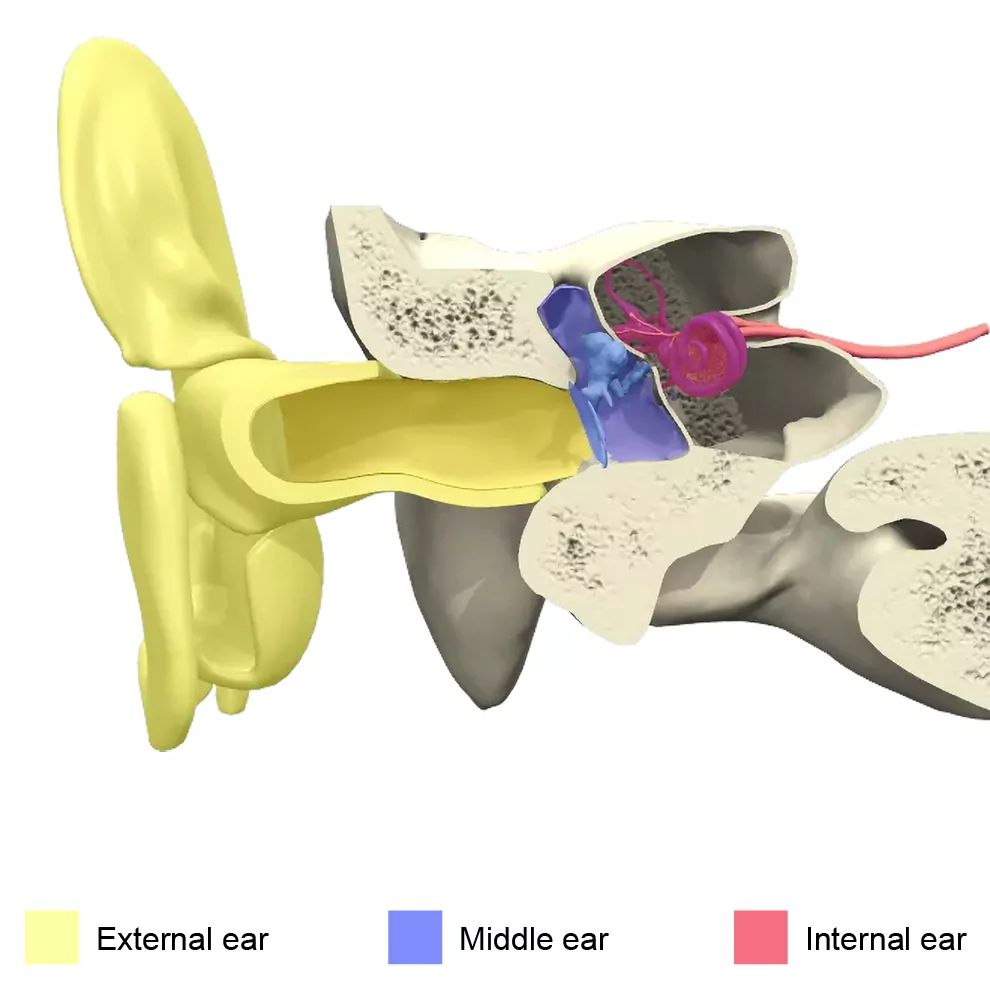
The external ear is composed of the auricle, the visible parts of the ear you see sitting on either side of your head, and the external acoustic meatus (auditory canal).
The contours of the auricles help direct sound deeper into the external acoustic meatus (auditory canal). This S-shaped tunnel is about four centimeters long and is lined with sebaceous and ceruminous glands, responsible for producing earwax. The main function of the external acoustic meatus is to direct soundwaves to the tympanic membrane (eardrum), which is a part of the middle ear.
Auricles are controlled by two groups of small muscles: the intrinsic and extrinsic auricular muscles. The extrinsic muscles are the ones that enable a small percentage of the population to slightly move their ears independently, or “wiggle their ears”!
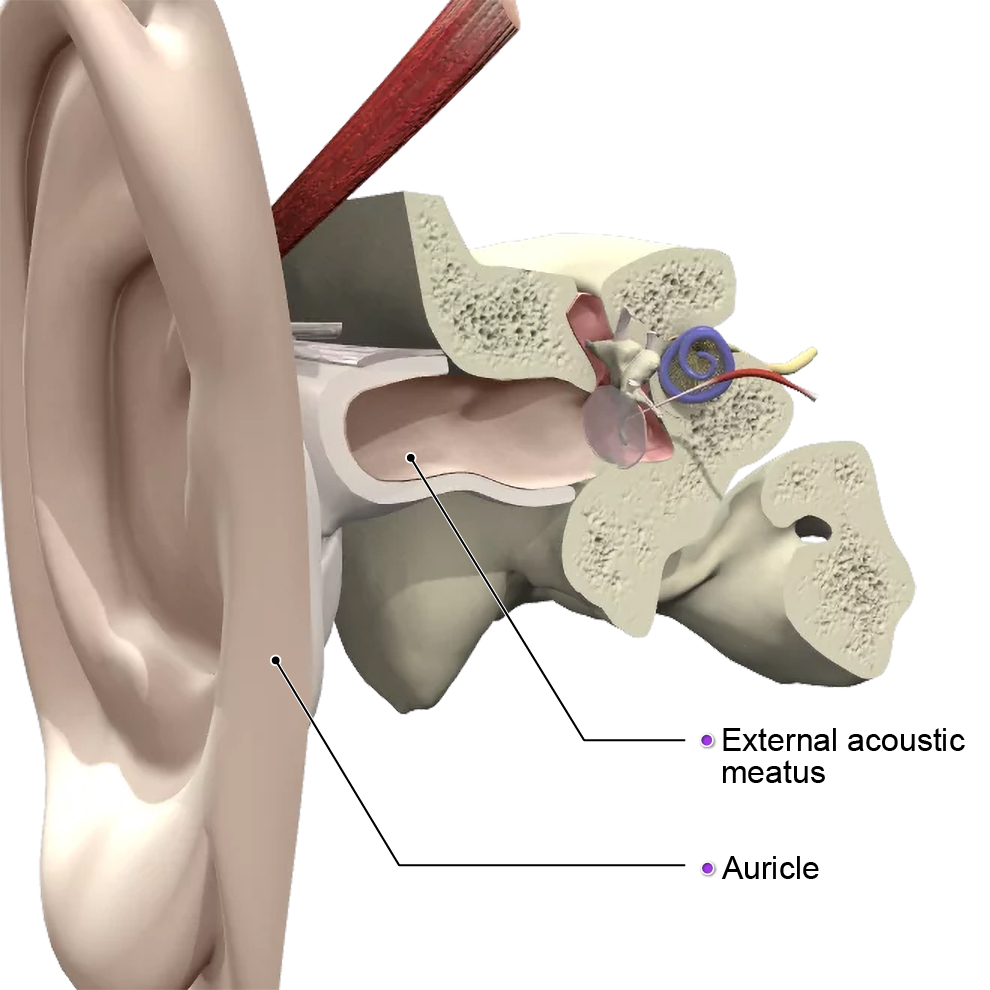
The middle ear, or tympanic cavity, houses the structures that amplify sound. These include two small muscles called the tensor tympani and stapedius, the tympanic membrane and the ossicles, which are those tiny bones we mentioned earlier (malleus, incus, stapes). When the tympanic membrane receives soundwaves via the external acoustic meatus, it vibrates. These vibrations get transmitted to the ossicles, and this chain of vibrations allow matching the high impedance of the inner ear to the low impedance of the air.
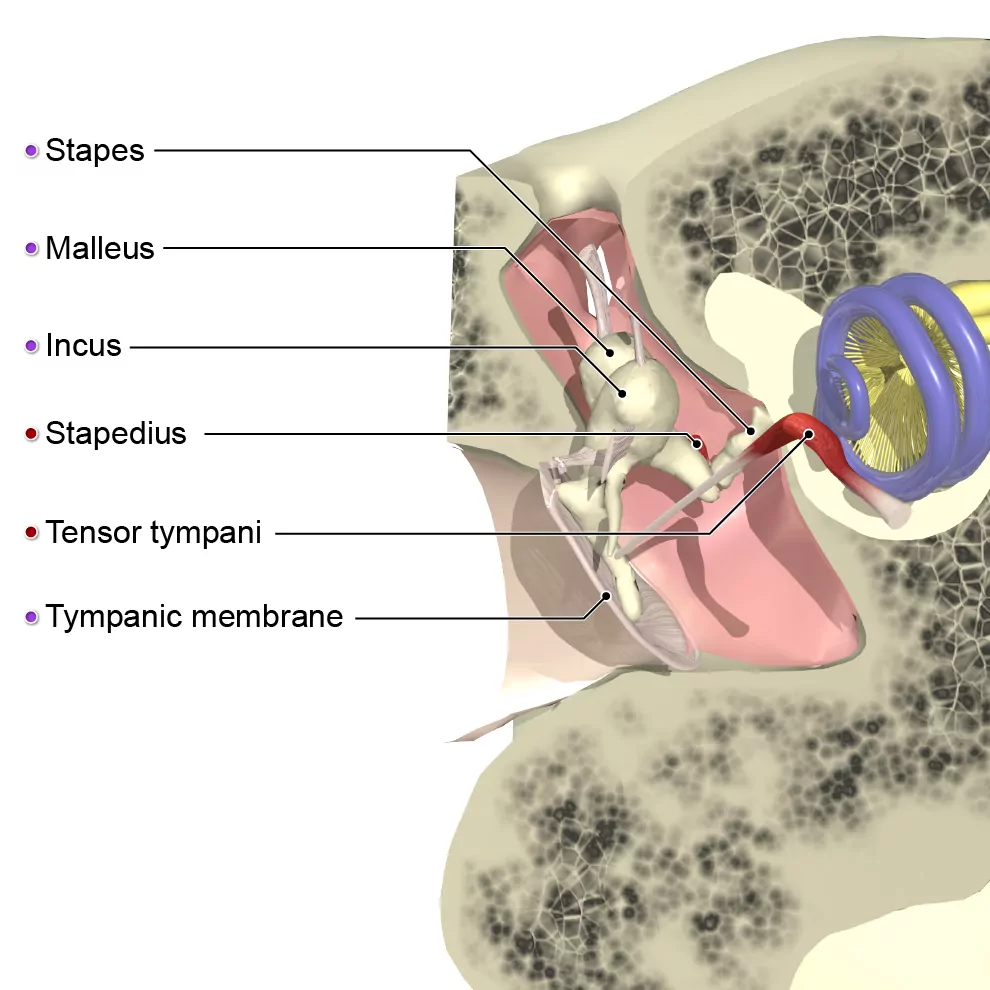
The inner ear consists of a network of bony canals contained deep within the temporal bone, which are responsible for both sound and balance. The bony labyrinth can be divided into two parts based on the function they are responsible for. The cochlea is a spiral-shaped cavity filled with fluid that is responsible for hearing by transducing soundwaves into electrical impulses, so that they can be amplified and interpreted by the brain as individual frequencies of sound. This transduction and amplification process is carried out by the specialized hair cells located in and out of the spiral organ, also known as the organ of Corti.
The semicircular canals are three tubes filled with fluids, which are responsible for maintaining balance. The cochlea and semicircular canal are joined together by the vestibule.
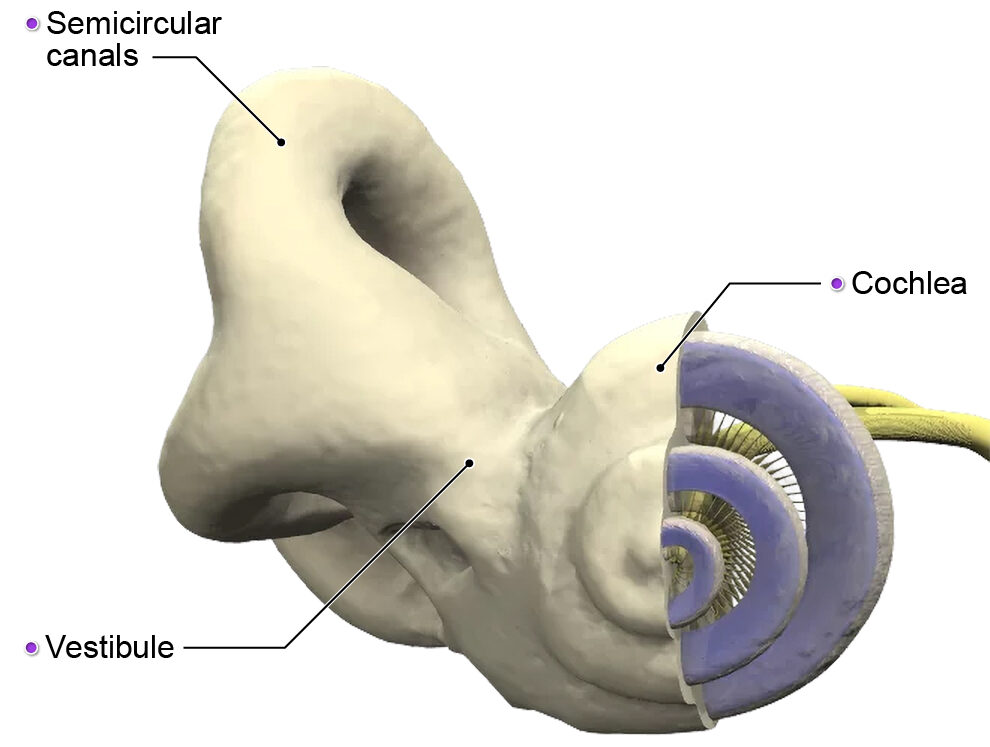
The sounds of silence
Sometimes, the sensitive hair cells in the cochlea can get damaged or the auditory system can be harmed in other ways. Both cases can lead to either partial or complete hearing loss. Preventing hearing loss and deafness is one of the aims of World Hearing Day. While some types of hearing loss may result from unavoidable genetic conditions or aging, others can be caused by environmental factors that can be controlled to prevent permanent damage to your auditory system.
Hearing loss can be broken down into three types:
-
- Sensorineural hearing loss: This occurs when the hair-like nerve cells in the inner ear get damaged over time. It may be caused by exposure to loud noises, aging, an inherited condition, injury to the inner ear, disease or the use of certain drugs (such as those used in chemotherapy). Symptoms of sensorineural hearing loss can include difficulty understanding normal-volume conversation, trouble hearing high-pitched noises or tinnitus (ringing in the ears, which affects some 15% of the world’s population). The damage in sensorineural hearing loss is permanent, but sufferers can sometimes find relief with a hearing aid. Preventing inner ear damage in the first place by eliminating your exposure to things like loud noises, or taking precautions by protecting your ears with the proper gear, is key. This can be anything from wearing noise-blocking headphones or earplugs if you have a job working near loud machinery, to turning down the volume while listening to music or watching TV. As a last resort, simply putting your hands over your ears or removing yourself from a noisy situation if no protective gear is available can help prevent irreversible damage.
-
- Conducive hearing loss occurs in the middle or outer ear. It prevents sounds from entering the inner ear and results in difficulty hearing soft sounds and potentially muffled louder sounds. Often, conducive hearing loss is caused by disease or infection, poor drainage, physical blockage of the ear canal (e.g., earwax or a foreign object) or fluid in your middle ear from a cold or allergies. The good news is that many of these can often be treated with medicine or surgery.
-
- Mixed hearing loss is a combination of sensorineural and conducive hearing loss. In mixed hearing loss, there are concurrent problems with both the inner and the middle ear.
Taking the right precautions now can help you limit damage to your auditory system and preserve your hearing. If you suspect you have hearing loss or if you experience a sudden loss of hearing, see your doctor right away. And remember, as the old saying goes, never stick anything smaller than your elbow in your ear!
The content in this post is from Primal’s 3D Atlas and Human Anatomy and Physiology modules. To learn more about these or other Primal learning resources, please fill in the form here and our team will be in touch.
